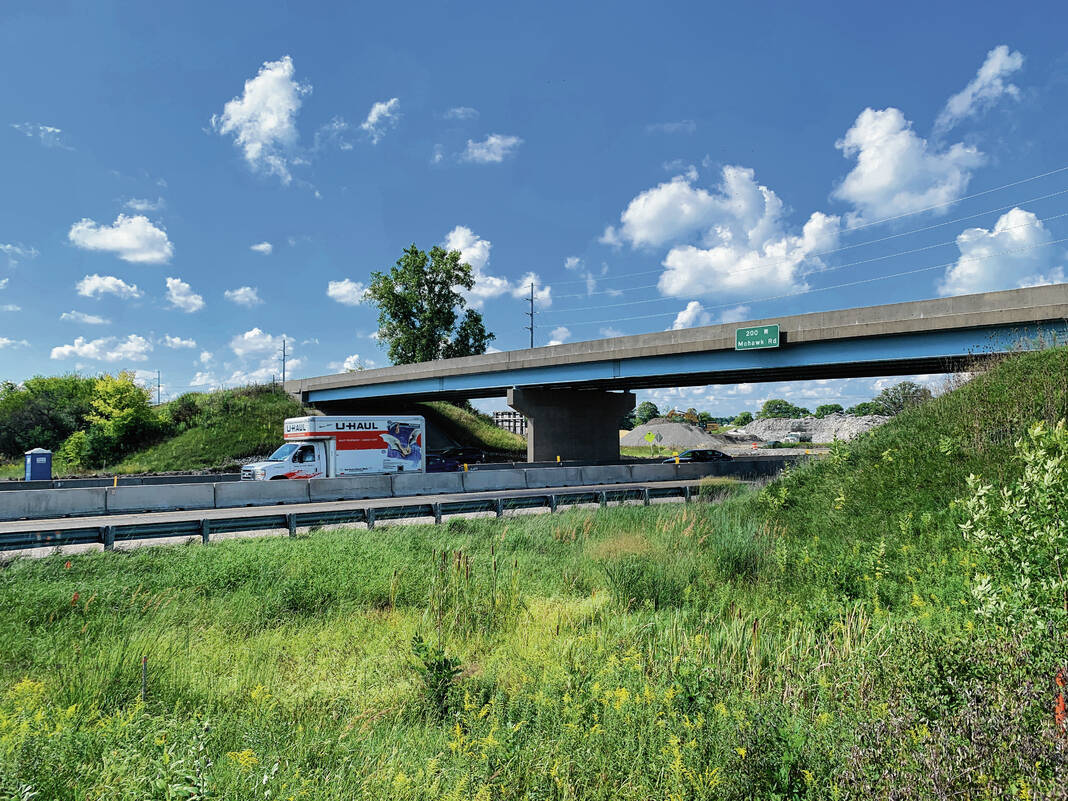This story has been updated to correct the previously misreported estimated cost of the interchange. The cost is estimated at $20 million.
HANCOCK COUNTY – Officials have a clearer road map to guide them as they consider a new connection to the interstate in the county.
Gary Pool, Hancock County highway engineer, addressed the potential I-70 interchange at CR 200W to a packed hearing room at the county courthouse annex Wednesday night. In an informational session during a joint meeting of the county council and commissioners, he outlined a variety of options for the extensive undertaking, each with varying time lengths, funding possibilities and levels of local control.
Pool noted CR 200W is about equally distant from I-70 interchanges at Ind. 9 in Greenfield and Mt. Comfort Road, or CR 600W – a thoroughfare in the western part of the county’s growing industrial area.
A new interchange, which is outlined in the county’s forthcoming comprehensive plan update, would reduce pressure on the existing interchanges, Pool said.
“What it does is it takes traffic that’s currently all having to use 600 West or State Road 9 and it would basically cut it in half, especially if development may start happening to the east of the airport,” he said. “There is pressure out there on the traffic system. … We’re not past the point of a big problem yet, but it’s something we need to think about because any project we do takes a lot of time.”
And a lot of money, Pool continued, estimating the project to cost about $20 million.
An interchange justification study would be needed before the project could proceed, which Pool estimates would cost between $200,000 and $400,000 and take four to six months to complete. For that, he’d issue a request for proposals from consultants to conduct the study and evaluate them before making a recommendation to the county commissioners, who would decide whom to hire.
The analysis would allow the county to request to the state that the interchange be added to its transportation improvement program.
“I can’t make the ask without a study,” Pool said. “I have to validate it with numbers.”
He outlined four options for carrying out the interchange, should the county commissioners and council decide it’s something they want to pursue.
One would be to have Pool lead it, a path he estimates would take five to seven years, allow moderate local control over the project and come with 50% to 80% state/federal funding. He recommends the rest of the funding come from local tax increment financing, or TIF – through which taxes generated by new development after an established date go toward funding capital improvements in a respective area.
Another option is to have the state manage the project, which Pool estimates would take seven to nine years, come with most to all state/federal funding and the rest local TIF, but no local control.
A federal earmark project would likely take five to 10 years, Pool continued, come with 60% to 80% state/federal funding with the rest local TIF, and allow low local control. He also noted it would require gaining leverage in Washington, D.C. to get the project added to a federal bill.
Build-operate-transfer would have nearly total local control and be the quickest option, at an estimated three to five years, but would be entirely funded by local tax increment financing. Pool said that process would consist of officials selecting a group of professionals in the private sector to manage the project and operate it before transferring it to the county. It’s quicker, he said, because the private sector can leverage financing faster than the public sector can.
Pool said that whichever path is chosen, cooperation with utility providers would be key, and not only to service development the interchange would draw nearby. He said at the meeting, and county commissioners president John Jessup said last week, that they’d like to see water and sewer service extended to the unincorporated community of Mohawk at CR 200W and CR 400N as well. Homes there are on wells and septic systems, and officials want to provide residents the option to connect to utilities, especially if their septic systems fail.
Officials indicated at Wednesday’s meeting that they’re not in a rush to pursue the interchange, but acknowledged the benefits it could create for traffic in the quickly developing county.
“What we don’t want to do is let it go till it becomes a big problem,” said county council president Bill Bolander.
Bill Spalding, a county commissioner, noted that a projected continuing rise in population is another factor.
“The growth we’re going to have too is going to drive that as well,” he said, adding the county is expected to gain 30,000 to 40,000 more residents over the next decade.
Starting the preliminary work on the interchange would be worthwhile, council member Keely Butrum said.
“I don’t think we’ve heard enough from constituents about what their priorities are, but studying it, knowing that someday somebody will need to get off the interstate somewhere between Mt. Comfort and Greenfield does make sense,” she said.





